Teppanyaki: your full guide to this amazing Japanese cooking style
“Teppan” is Japanese for “iron pan” while “yaki” means grilled. Teppanyaki is mainly characterized by fresh ingredients and light seasoning.
This style of cooking enhances the original flavors of the ingredients rather than cover them up.
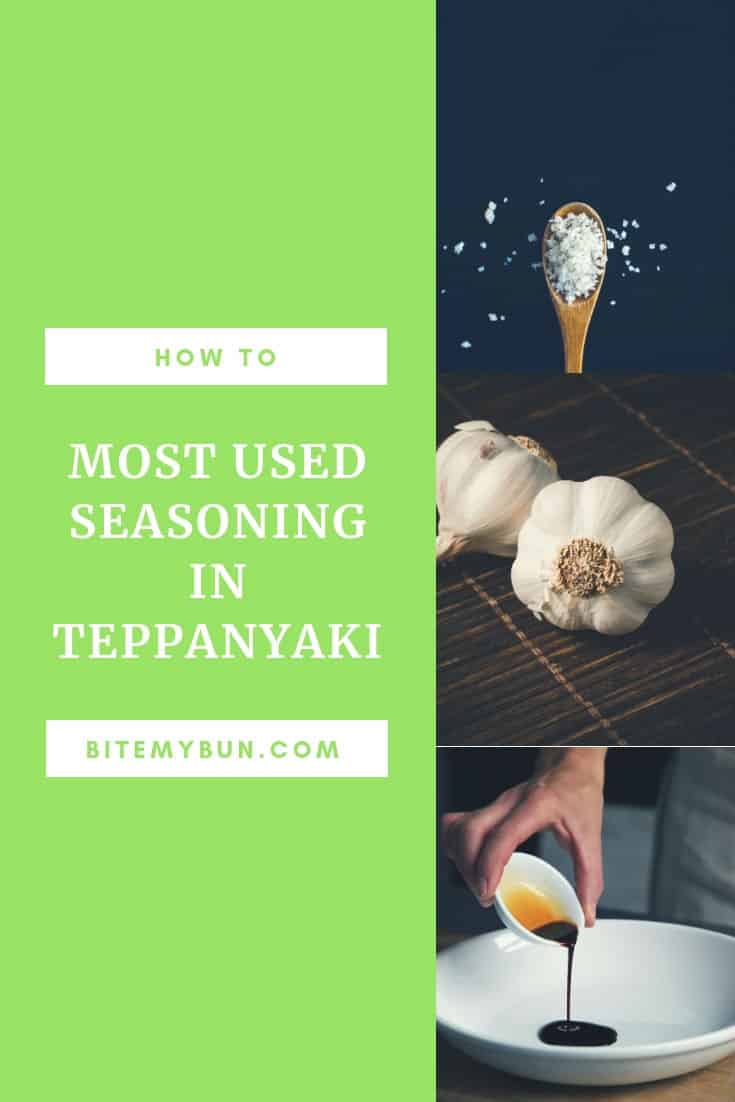
All kinds of beef from different geographical regions feature in teppanyaki dishes. You’ll have to dig deeper into your pocket for Japanese beef from regions like Kobe, Akita, and Matsusaka.
The highest quality of Japanese beef is believed to be produced from cows that receive special treatment, such as music and massage.
Also read: these are the differences between teppanyaki and table gourmet or raclette cooking

Check out our new cookbook
Bitemybun's family recipes with complete meal planner and recipe guide.
Try it out for free with Kindle Unlimited:
Read for freeIn this post we'll cover:
- 1 These 3 things make typical Japanese teppanyaki food
- 2 Equipment and ingredients used in teppanyaki cuisines
- 3 How teppanyaki cooking is performed
- 4 Ingredients in teppanyaki style cooking
- 5 Teppanyaki courses
- 6 Plus points of teppanyaki dishes
- 7 What teppanyaki is all about
- 8 What does “teppanyaki” mean?
- 9 A brief history of teppanyaki
- 10 Teppanyaki isn’t hibachi
- 11 Teppanyaki cookbooks to get you started
These 3 things make typical Japanese teppanyaki food
Teppanyaki is a Japanese-style cuisine that utilizes an iron cooking device with a flat surface to cook food. The term “teppanyaki” literally translates to pan-frying, grilling, or broiling on an iron plate.
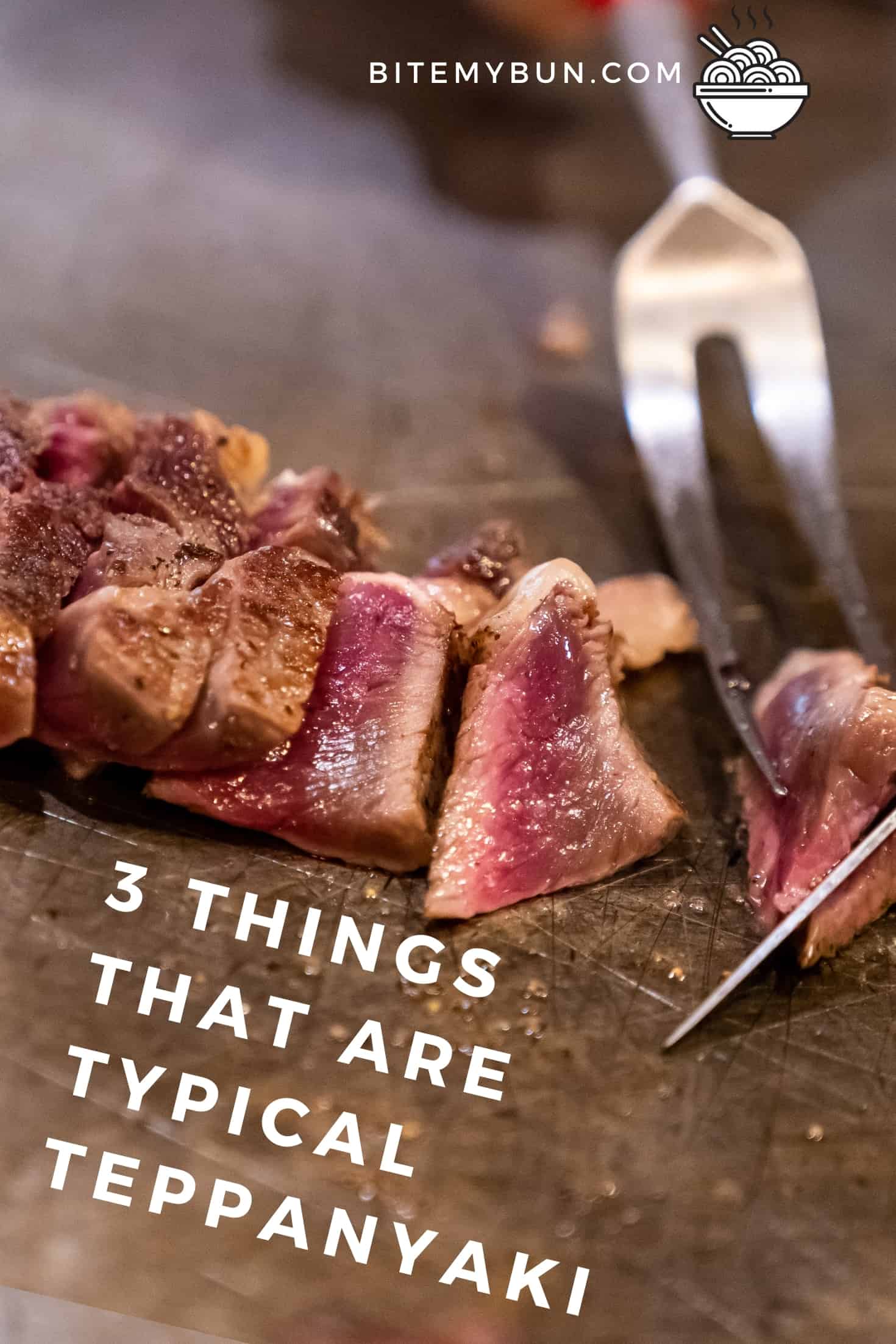
In addition, teppanyaki is inspired by Western side dishes and Eastern flavors.
One of the perks of ordering teppanyaki cuisine is its versatility. You can definitely choose your desired ingredients and even the amount and type of oil and seasoning.
Typical teppanyaki food consists of well-seasoned meat, fish, or vegetables, most often in at least soy sauce, vinegar, garlic, and pepper, and is grilled in vegetable oil. It’s served as a main course with multiple side dishes to accompany the main dish:
- It’s grilled on a flat surface
- It’s served as several side dishes with the main course
- It uses fish, vegetables, or meat with vegetable oil and spices
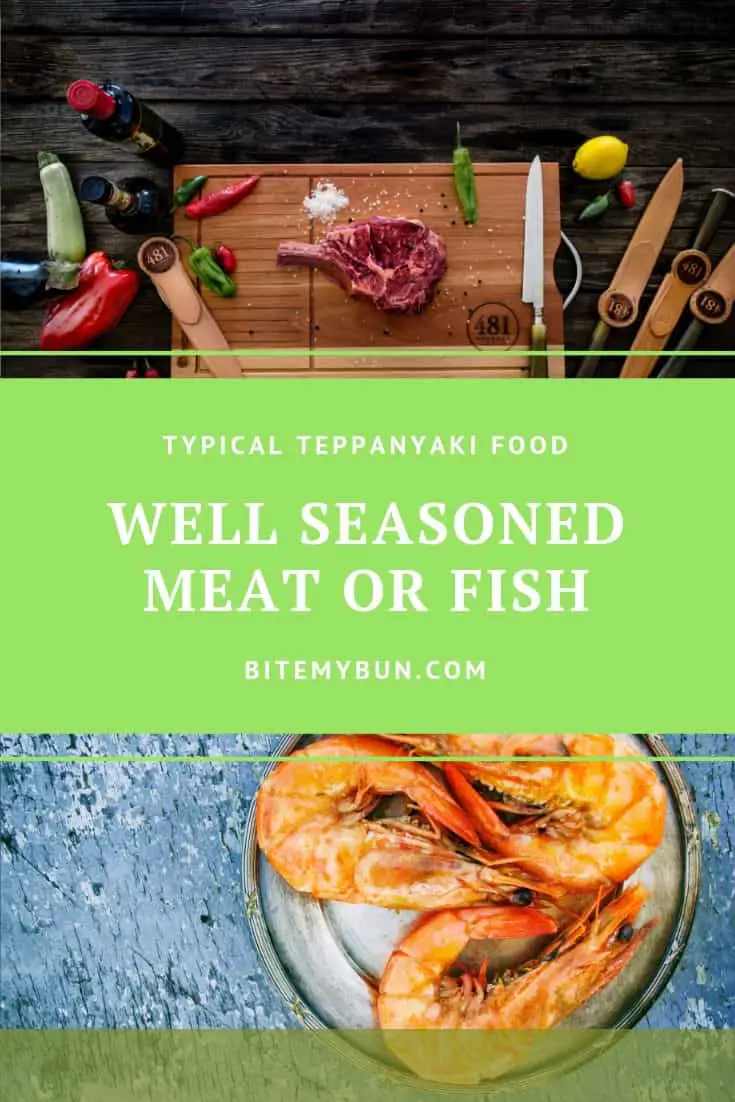
I have a lot of fun making it at home and you can too with these great teppanyaki knives.
Equipment and ingredients used in teppanyaki cuisines
The wide and flat iron grill, known as a teppan grill, is the primary equipment used in preparing teppanyaki cuisines.
Usually, the teppan grill is situated tableside with the chef preparing food in front of the customers.
In addition to the teppan grill, other equipment include metal spatulas, a grill fork, and a huge, razor-sharp knife. These are all needed to manipulate the ingredients.
Also read our article on the essential teppanyaki tools
Reasons why you need a teppanyaki grill
- You won’t need many pans: Rather than preparing different ingredients, and having many dishes to wash, a teppanyaki grill does away with all that. You only have 1 grill to prepare all your meals on and to clean.
- Cook to perfection: Perfectly cook your vegetables and meat in your house without having to experience the coldness of winter.
- Transform your meals into an experience: You can entertain your guests as you dine. You don’t need to spend those many hours in the kitchen while your guests are having a good time. With a teppanyaki grill, you can cook food right on your table, and keep the food warm as you eat.
- You can use the grill at any time: The teppanyaki grill is ideal for any meals, be it breakfast, lunch, or dinner. The grill allows you to cook any meal you want quickly, which saves you time.
How teppanyaki cooking is performed
The ingredients used in preparing Japanese teppanyaki are yakisoba, sliced meat or seafood, and cabbage. Vegetable oil, animal fat, or a mixture of both is used for cooking.
Kobe beef is most commonly found in restaurants, but it’s a bit expensive. It’s of much higher quality though.
Less expensive meat cuts from the USA and New Zealand are also available. The beef cuts are either choice sirloin or tenderloin.
The dishes come with a variety of side dishes such as zucchini, mung bean sprouts (prepared in lots of different ways like with these 10 tips!), crispy garlic chips, and fried rice. In Japan, only soy sauce is available, but other Western restaurants provide dipping sauces as well.
Teppanyaki food may be outstanding in taste, but wait until you see how it’s prepared. A teppan grill is placed on the table where you’ll be seated before the chef begins the outstanding performance.
As the years go by, teppanyaki has evolved. It isn’t about cooking anymore; it’s more a form of art!
The Japanese are known for their creativity and they have a reputation of turning basically anything into a form of art, and cooking is no exception.
Teppanyaki cooking began in Tokyo as locals began using a hot plate grill. And you can’t help but notice that not every aspect of this cooking style is Japanese.
It came as a surprise to the locals when a restaurant in downtown Tokyo known as Misono began using a table-side grill to do its cooking in 1945. A combination of entertainment and teppanyaki dishes such as “flaming onion volcanoes” propelled Misono to global fame.
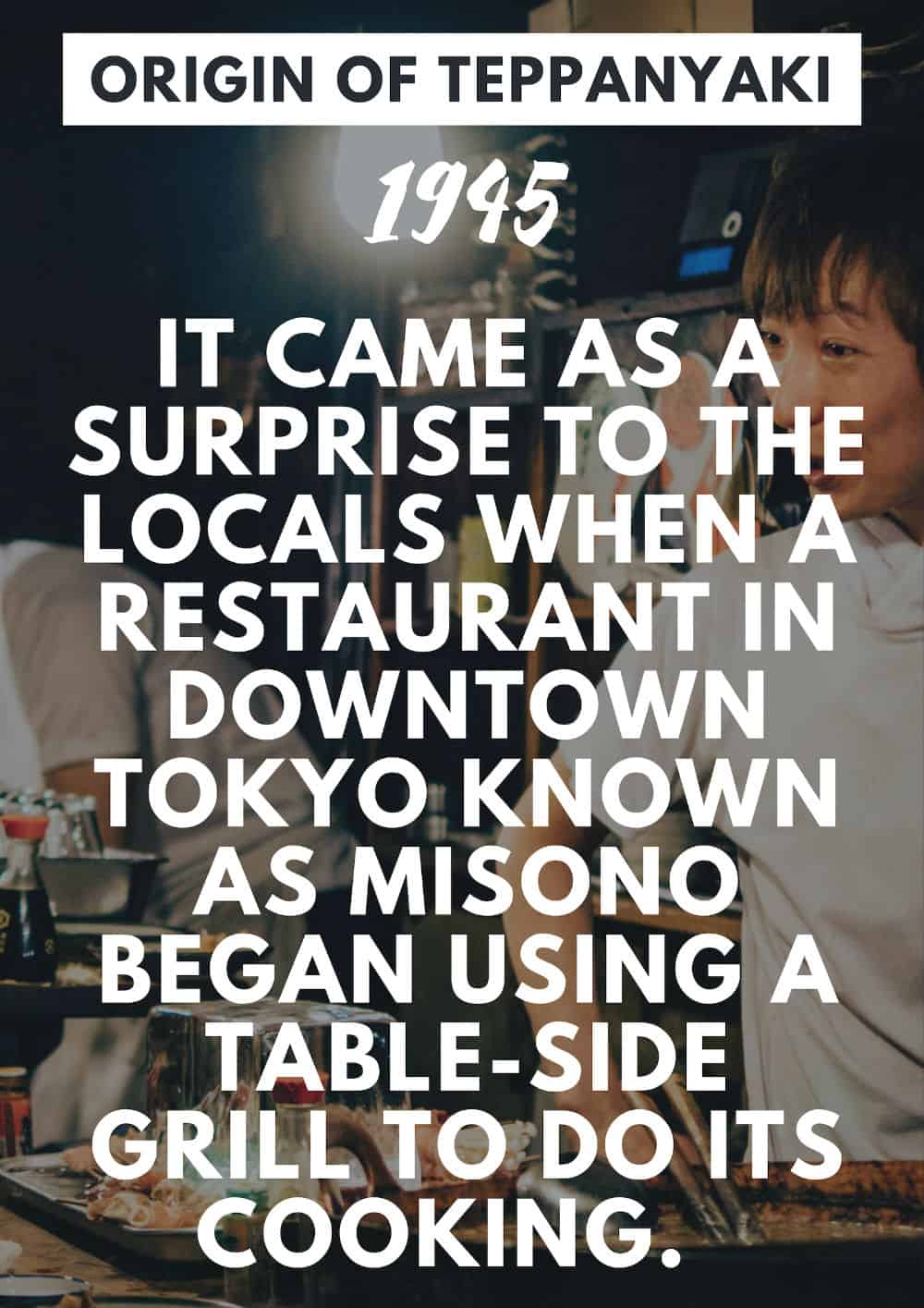
Ingredients in teppanyaki style cooking
The teppanyaki style of cooking is characterized by light seasoning and fresh, flavored ingredients.
They include:
- Meats such as steak, seafood, and chicken
- Rice, fried noodles (yakisoba), and other dough-based foods
- Okonomiyaki and monjayaki (savory pancakes with a number of different flavors and ingredients)
- Onions, mushrooms, bean sprouts, and carrots
- Pepper, vinegar, soy sauce, wine, salt, and garlic among other seasonings
The ingredients used in cooking Western teppanyaki are a little different from the Japanese version. Beef is the most common ingredient in Western cooking.
Others include chicken, scallops, vegetables, shrimp, and lobsters, with soybean oil used for cooking them.
Here, we’ve summarized it in a video for you:
Teppanyaki courses
Each restaurant offers various menus when it comes to teppanyaki; the most common of these is a Western-style course menu with a Japanese twist.
Normally, course menus begin with an appetizer like salad or soup, then a seafood course, the main course (a meat dish), a rice course, and a dessert including tea or coffee. The following are some of the teppanyaki courses.
Beef course
Since teppanyaki is a counterpart of the American steak in Japan, it isn’t surprising that meat is the primary course of the meal.
Japanese teppanyaki dining allows you to savor the rich sweetness of top-quality black-haired wagyu beef.
Rice course
Fried rice and egg or risotto are also served during a teppanyaki dinner. The rice is directly cooked on a teppan cooktop.
Highly skilled chefs usually toss the egg into the air through a spatula prior to frying it.
Seafood course
In a seafood course, prawns and scallops are commonly grilled. When it comes to the seafood course, Hokkaido black abalone and ise spiny lobster are popular in Japan.
Vegan course
Teppanyaki vegan recipes include fried vegetables with rice. Carrots, white cabbage, and julienned zucchini are some examples of these veggies.
These vegetables are sautéed using a tangy sauce. This can be served with or without starch.
Dessert
Top off your teppanyaki meal with pastries, cake, or sorbet, along with tea or coffee.
Plus points of teppanyaki dishes
Teppanyaki dishes are very low in fat and are considerably light since very little oil is involved.
When ordering teppanyaki dishes in a restaurant, you’re given the option of deciding exactly how you want them prepared.

You can decide the kind of seasoning and the amount of oil that suits your taste. The food comes in small portions but is still adequate. It’s the kind of food that’d definitely be recommended for health-conscious folks!
It’s also safe to say that the ingredients used in teppanyaki cooking are recommendable as far as your health is concerned.
The popularity of Japanese steakhouses has made teppanyaki a household name in America. The teppanyaki style of cooking is also used in preparing yakisoba (noodles) with seafood or sliced meat, using vegetable oil or animal fat.
It’s evolved over the years into an interesting style that’s no longer considered just cooking, but a form of art.
The knife, fork, and spatula are flipped, tossed, clanged, and drummed together, creating a rhythm that’ll definitely capture your attention. The feast will then begin with the chef’s skillful chopping and dicing of the food, which is then placed on a grill that’s already aflame.
The result is not only appealing to the eye, but the taste will also leave you longing for more!
If you’re lucky to get a truly creative chef, you may witness some of the following tricks:
- Catching an egg with the hat
- Flipping a shrimp tail into the shirt pocket
- Splitting an egg mid-air with a spatula
- Flipping pieces of shrimp into your mouth
These are just but a few of the many tricks you may come across. You’ll also have the privilege of choosing your own chef and how you want the food prepared.
What teppanyaki is all about
What can you typically find in a teppanyaki restaurant?
Many teppanyaki restaurants utilize costly, high-quality ingredients, thereby making this cuisine a fancy meal for special events or occasions.
Teppanyaki can be primarily made:
- With seafood
- Steak
- Chicken
- Dough-based ingredients such as fried noodles or yakisoba and rice also comprise this cuisine
Other ingredients include seasonings (wine, soy sauce, vinegar, pepper, salt, and garlic) and minced or cut veggies (bean sprouts, carrots, mushrooms, and onions).
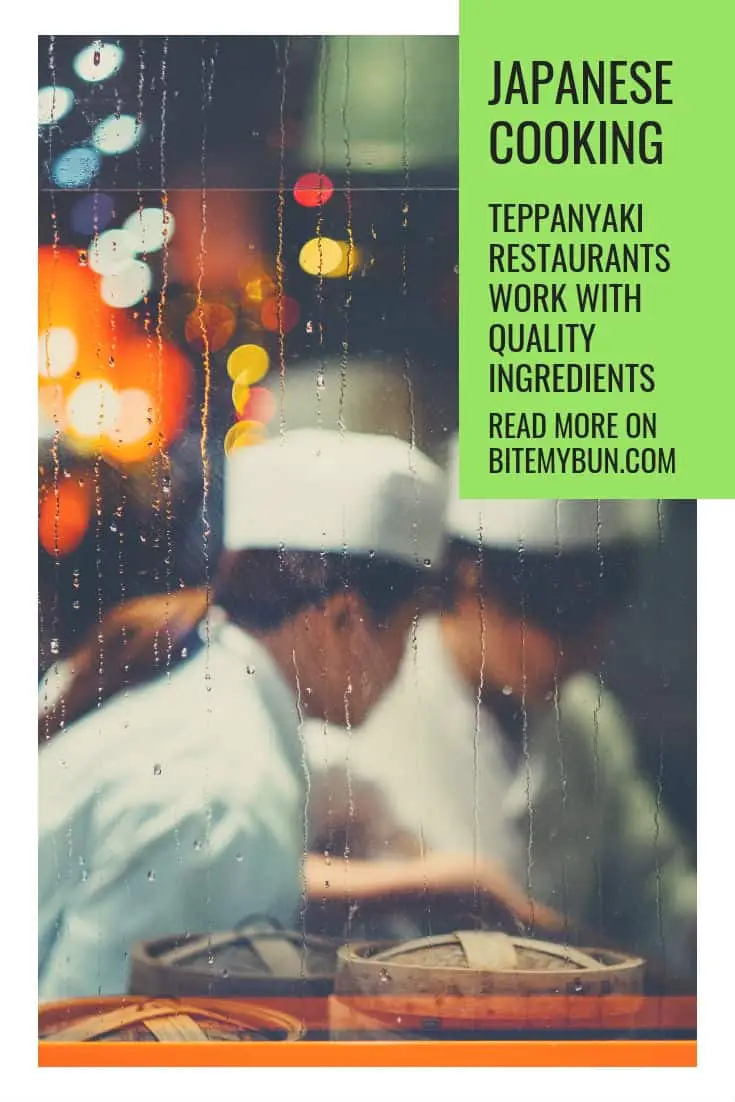
Teppanyaki cuisine is not only common in Japan, but it’s also a popular cuisine in the Western world.
When it comes to Japanese-style teppanyaki, the ingredients that are usually utilized are seafood or chopped meat, cabbage, and yakisoba.
Vegetable oil, animal fat, or both are used to cook the ingredients. Beef is also an ingredient used by many restaurants in Japan.
On the other hand, the common ingredients utilized in preparing Western teppanyaki include lobster, shrimp, chicken, beef, scallops, and veggies. All these are cooked using soybean oil.
Teppanyaki cuisines are served with a side dish. Some restaurants offer dipping sauces; however, only soy sauce is provided in Japan.
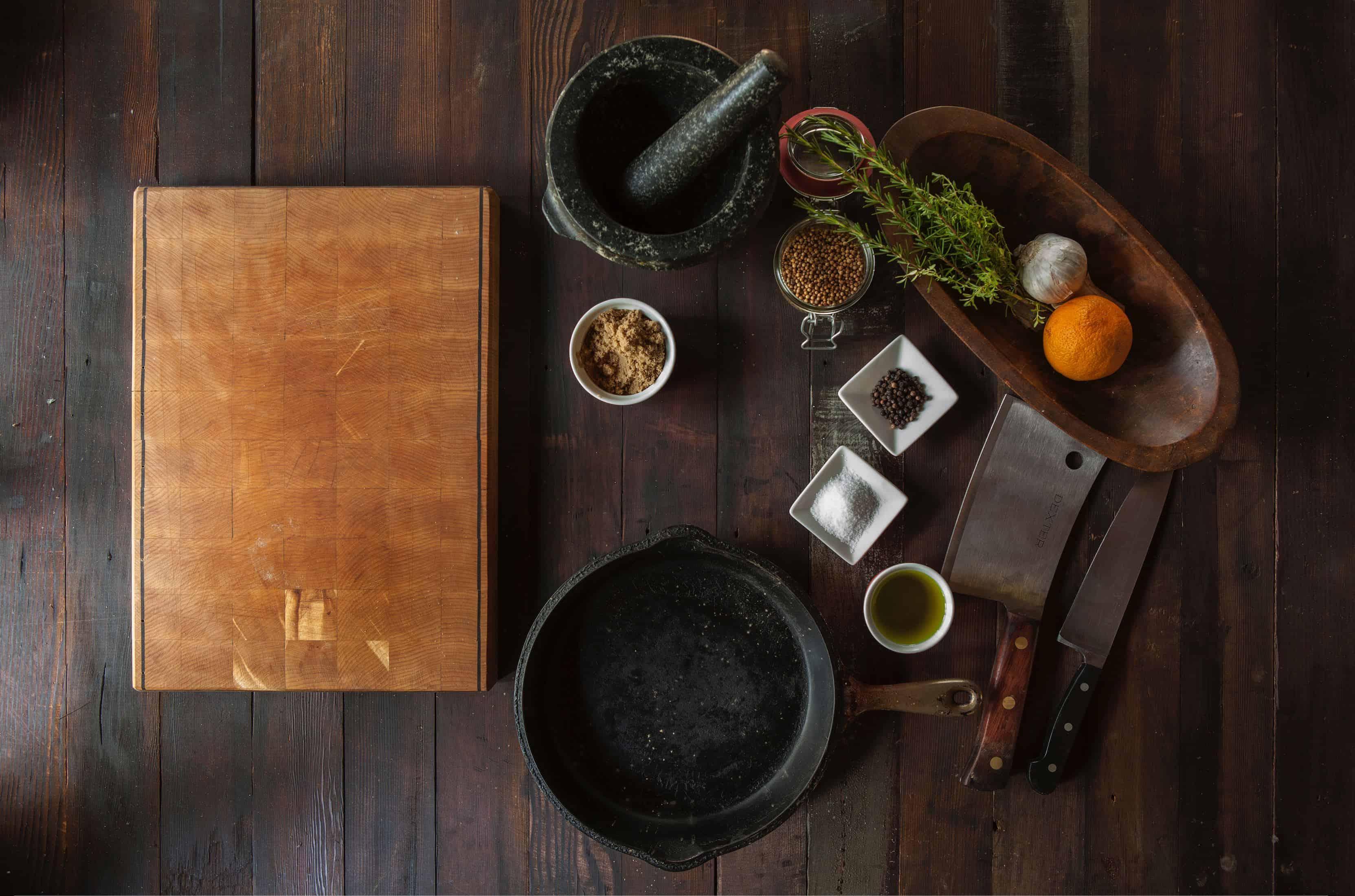
Teppanyaki as an art
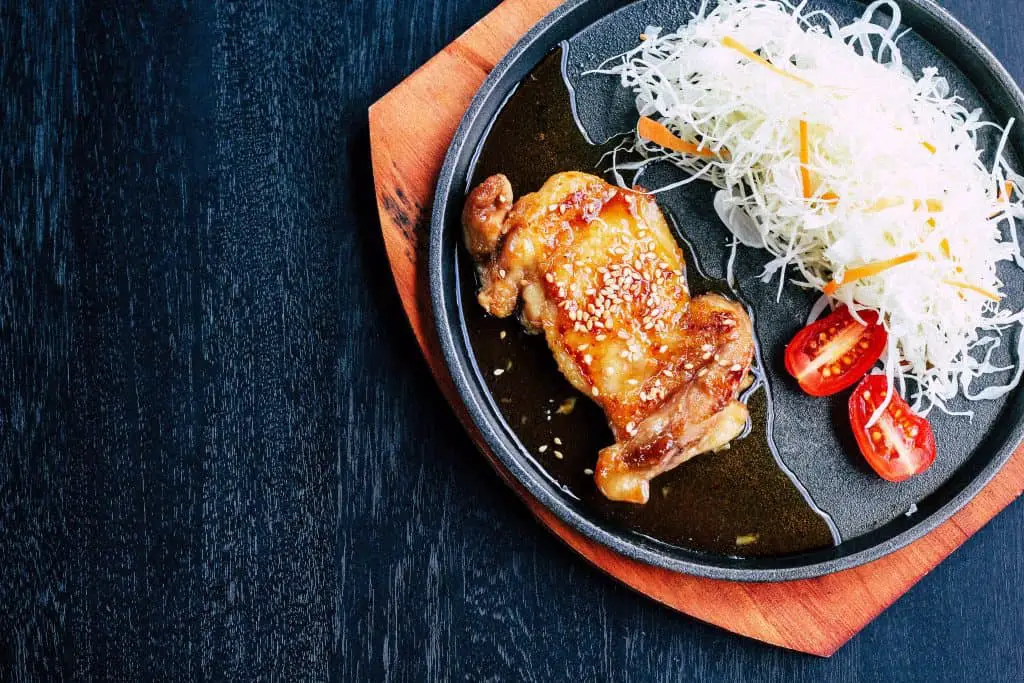
Although teppanyaki is a cooking style, it’s also considered a form of art. As a matter of fact, it’s a blend of old-fashioned Japanese cooking methods and contemporary performance art.
As mentioned earlier, teppanyaki cuisines are prepared in front of diners. In the long run, this concept has turned into a food entertainment or show.
Because of this, many Japanese movies and TV series usually highlight socially elite individuals enjoying their teppanyaki meal.
One main focus of teppanyaki dining is the chef’s ability to demonstrate various cooking techniques. This enables guests to have a dining experience the same as the dinner theater.
The exhibitions that chefs do include flipping cooked prawn, precisely slicing or cutting meat or seafood, and setting fire to chopped onions.
Your teppanyaki experience won’t be complete without witnessing the art of teppanyaki cooking.
Japanese teppanyaki & its meaning: How it came to Japan
In Japan, teppanyaki refers to dishes cooked using an iron plate, including steak, shrimp, okonomiyaki, yakisoba, and monjayaki.
Modern teppanyaki grills are typically propane-heated flat surface grills and are widely used to cook food in front of guests at restaurants.
The world of culinary arts is surely a diverse one. There are just so many options and each is a delight for your taste buds. But few are both delicious and an art form; that’s where Japanese teppanyaki comes into play.
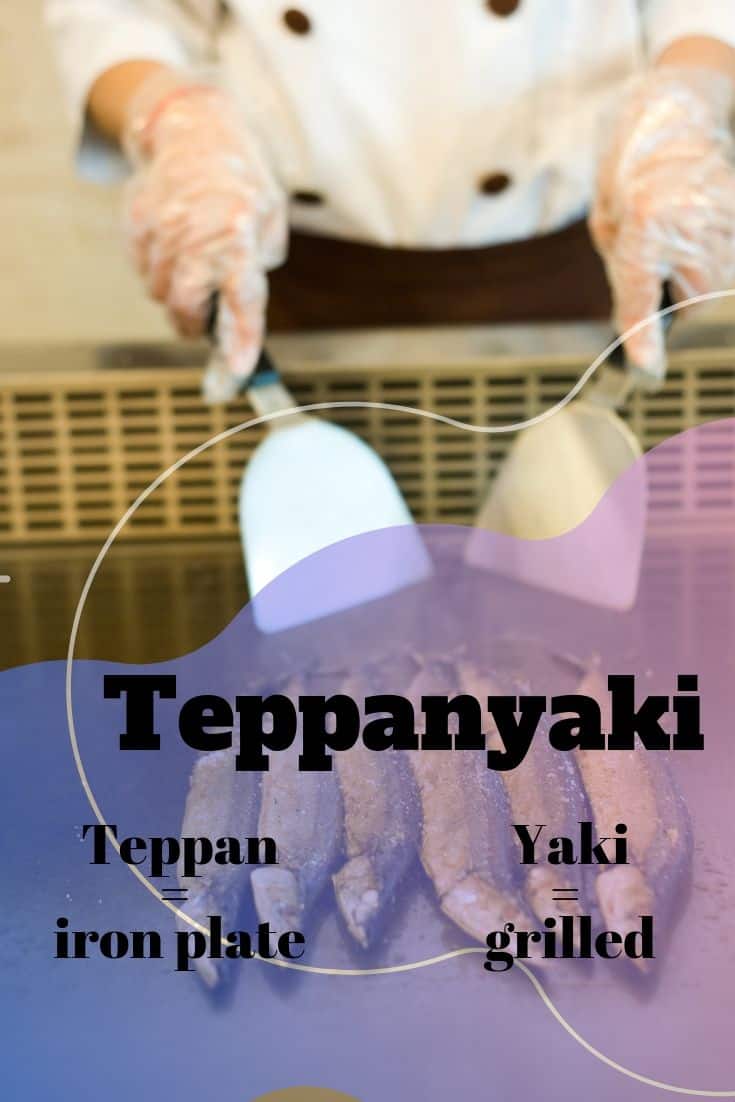
If you’re neither a hardcore foodie nor a culinary expert, then you may have never heard of the term “teppanyaki”. It’s gaining a lot in popularity though, and it’s and quickly becoming a household name in America, as well as all over the world.
But trust me, you definitely came across it at least once. This is because the presence of teppanyaki is dominant even in Western culture. I’d argue it’s even more so in Western culture than in Japan, though it’s still authentic Japanese cuisine.
Did you know it’s not that old? Let’s find about out that, and much much more in this in-depth post with all the information you’ll need on teppanyaki.
By the end of this article, you’ll be an expert on the topic.
What does “teppanyaki” mean?
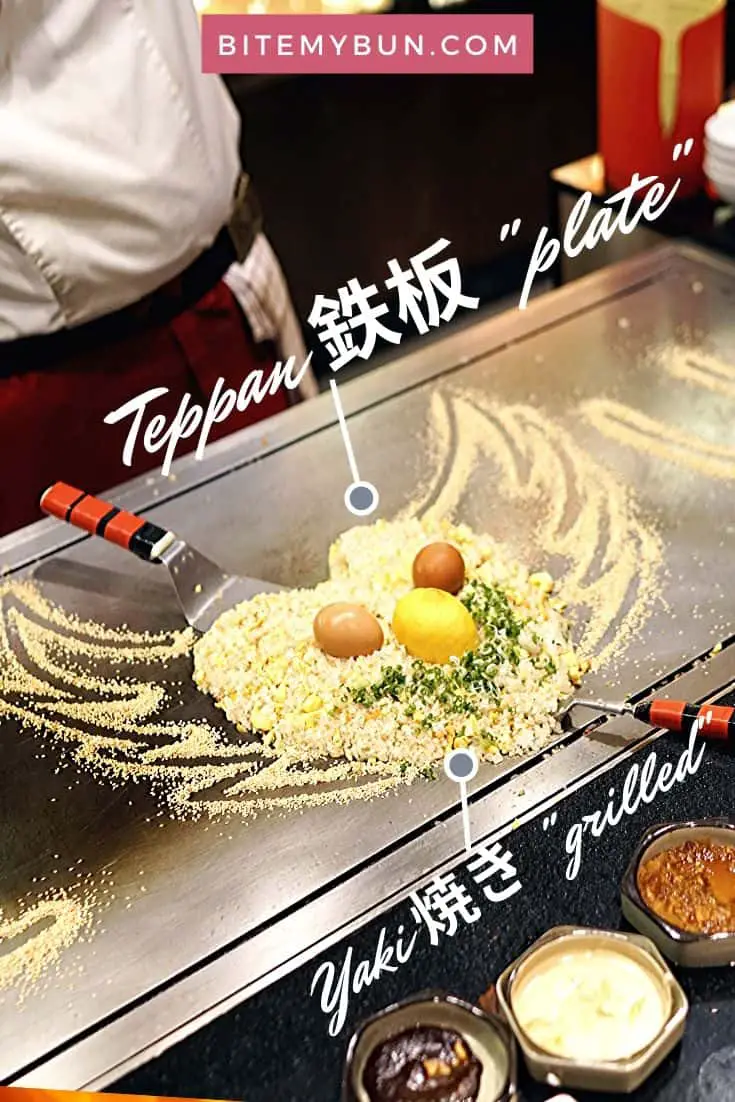
Teppanyaki means “grilled on a flat iron plate”. When we break down the Japanese word teppanyaki you get “teppan” 鉄板, which means “iron plate”, and “yaki” 焼き, simply meaning “grilled”.
This is like “yaki” in “yakitori”, which means “grilled chicken skewers” (“tori” means “bird” in Japanese).
In layman’s terms, teppanyaki is a Japanese cuisine that involves the use of a flat iron griddle to cook food.
You may be thinking that this is a very simple cuisine, but you’d be so wrong.
Teppanyaki is one of the most complex forms of food preparation out there and it takes high levels of skill to master this form of cooking.
Here’s The Art of Teppanyaki, a video by David Tran at his Benihana restaurant:
A brief history of teppanyaki
When I say history in an article involving Japanese things, you all must be thinking of ancient times when ninjas and samurais were dominant.
But this is a very common mistake; teppanyaki cuisine is relatively new, but people assume it’s ancient due to the style of preparation.
It all began in 1945 when Shigeji Fujioka introduced the concept of cooking western food on a “teppan” at his restaurant chain called Misono. This idea wasn’t so popular among locals at first, as they found it to be very common; below them even. It was just not Japanese.
However, the restaurant chain observed that tourists were fascinated by this cuisine, mostly because of the knife skills that were displayed by the chefs right in front of them. It was obvious why Shigeji made his choice, as Japan was occupied by the Americans after World War II, and there wasn’t a better place than Kobe (which was Japan’s largest port) to create a cooking style that was able to remind the soldiers of their grilled beef from home.
It was something totally new in the culinary world at that time and it was invented by the Japanese. it’s just not authentic traditional Japanese cuisine.
Teppanyaki has seen remarkable growth in the US in the form of large chain restaurants, which were even more common in the ’80s than they are now! Cooks at these diners cook meat and vegetables, and even rice on a sweeping iron fire sear in front of their customers.
Dinner guests can appreciate watching the masterful cooking techniques with the culinary specialists’ fun execution styles, which can lead to some exciting experiences if you’ve never seen it up close before.
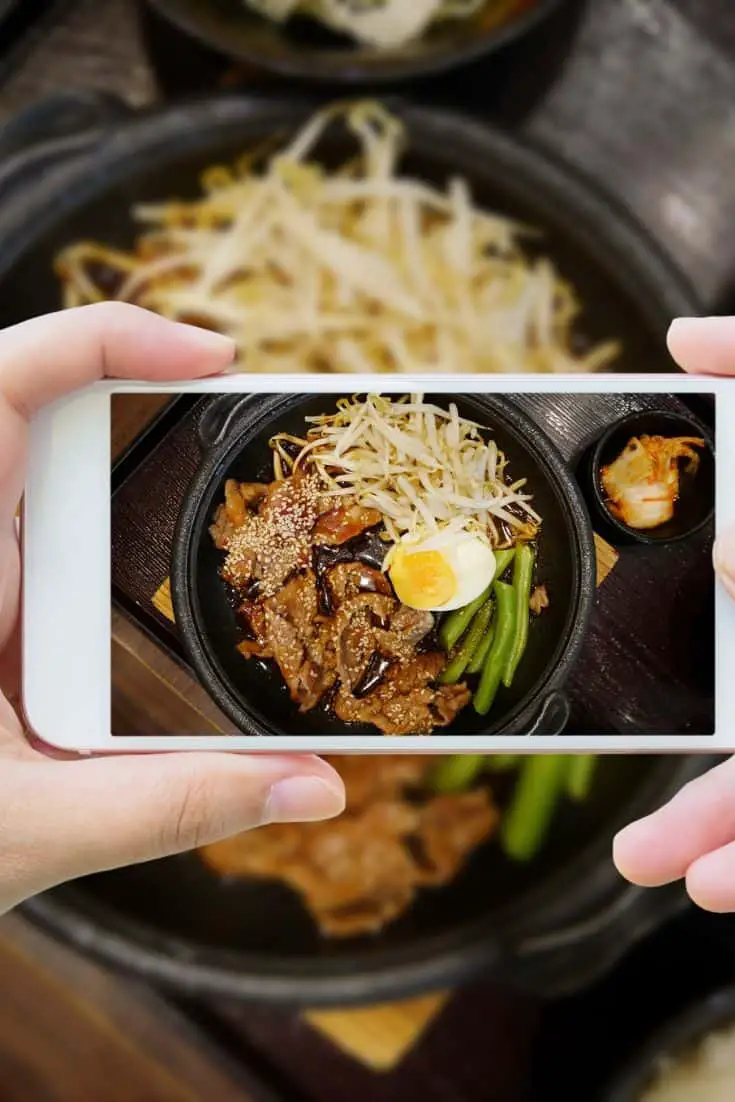
It’s like dinner and a show, put together in one exciting package!
However, eppanyaki restaurants in Japan have an exceptional one-of-a-kind vibe compared to those in the US.
Want to get started in making teppanyaki yourself? Check out our essentials buying guide to get you on the right track.
Teppanyaki isn’t hibachi
Teppanyaki is regularly mistaken for hibachi flame broiling. They have a very significant yet unnoticeable difference. Sounds weird right?
What is teppanyaki-style cooking? Teppanyaki-style cooking just means the food’s been prepared on a flat iron grill. In short, that’s all there is to it.
What most people mean additionally is that it’s made by a chef with impressive knife skills, or that it’s made with a particular sauce for flavor.
The term “hibachi” literally translates to “fire bowl.” This is because the grill used for hibachi cuisines is a very unique cylindrical vessel with a fireproof lining.
They put charcoal on it and then cook their food in it. For teppanyaki, as we know already, an iron griddle is used.
The ingredients of teppanyaki and hibachi are very similar, which perhaps is one of the reasons that this confusion arises.
The cooking process yields completely different tastes though. I personally prefer teppanyaki, but this is subject to my personal preference.
Other than that, both hibachi and teppanyaki are more than just cuisines in Japan. They’re a form of art and both deserve equal appreciation.
Teppanyaki has made a greater impact because it normally works with Japanese steaks and we all know that Japanese steaks are the best in the world!
Teppanyaki is easy to make at home relative to hibachi and also the availability of the iron griddles is more common than the special cooking vessel required for hibachi.
Often, when people say they’re going to a hibachi place, they actually mean that they’re going to a restaurant where the chef cooks in front of them on a teppanyaki grill plate.
Also, a lot of people are calling it “tempanyaki”, which is incorrect. They’re probably mixing in “tempura” in the words because they ate that once at a sushi restaurant. Just know that “teppanyaki” is the correct word for it.
Teppanyaki has a very interesting history, no doubt about that. However, it must be noted that this form of cooking is flourishing in modern times and is a key element in spreading Japanese culture all over the world.
The next time you see a traditionally dressed Japanese man boasting his knife skills at a restaurant, just know for sure that he’s not a ninja, but a great teppanyaki chef!
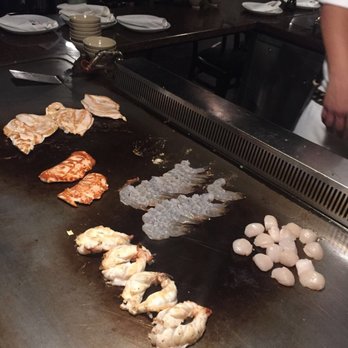
Also read: the main differences between hibachi and teppanyaki
What is teppanyaki cooking?
Teppanyaki refers to a dish of veggies, fish, and meat that’s prepared using a large griddle that’s commonly built into the table for diners.
Teppanyaki is typically considered a live kitchen cooking method, wherein the chef prepares the dish in front of customers. The guests will then choose the cooking style that they desire and select the seasoning themselves. But you can, of course, cook teppanyaki yourself in your own home using one of the many tabletop grills or stovetop grills that are available.
The chef is trained in using the specialized cooking tools like a pro and will do the rest of the preparation for you. Usually, each dish is prepared one at a time in order for the patron to appreciate the taste of the food and flair of the cooking style and make a whole evening out of the dining experience.
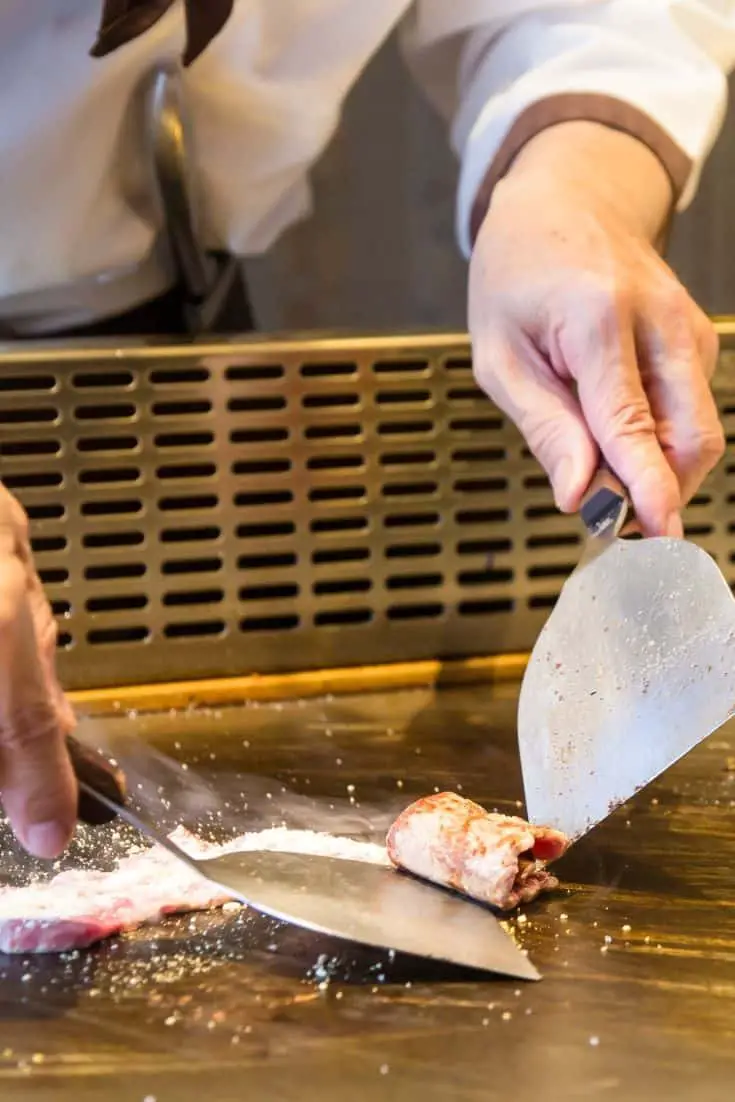
Teppanyaki shouldn’t be regarded as similar to barbecue grill.
The latter utilizes gas flame or charcoal and has an open grate structure, while the teppanyaki plate has a flat design, which is perfect when cooking small ingredients such as little cuts of meat, chopped veggies, eggs, and rice.
If you’re not sure yet what types of grill to buy, it’d be great to include a teppanyaki table on your list as well. I’ll explain the benefits of this type of cooking a bit more below.
Teppanyaki cookbooks to get you started
If you want to get started with teppanyaki cooking at home, you can get a lot out of the right information. But there aren’t that many good cookbooks out there.
If you’d like a little more backstory and history about the author and how he came to be a great teppanyaki chef, then Teppanyaki: Modern and Traditional Japanese Cuisine by Hideo Dekura is a great read. It has 60 recipes ranging from beef to lamb and seafood, with a lot of explanations about each of these types of teppanyaki.
If you’d like a more detailed guide on the best recipes, and a little less of a story, then Barbecue in Style A Teppanyaki Adventure is the one you should opt for.
Check out our new cookbook
Bitemybun's family recipes with complete meal planner and recipe guide.
Try it out for free with Kindle Unlimited:
Read for freeJoost Nusselder, the founder of Bite My Bun is a content marketer, dad and loves trying out new food with Japanese food at the heart of his passion, and together with his team he's been creating in-depth blog articles since 2016 to help loyal readers with recipes and cooking tips.
